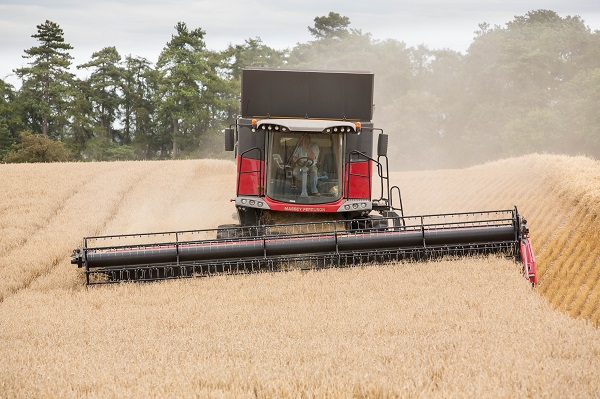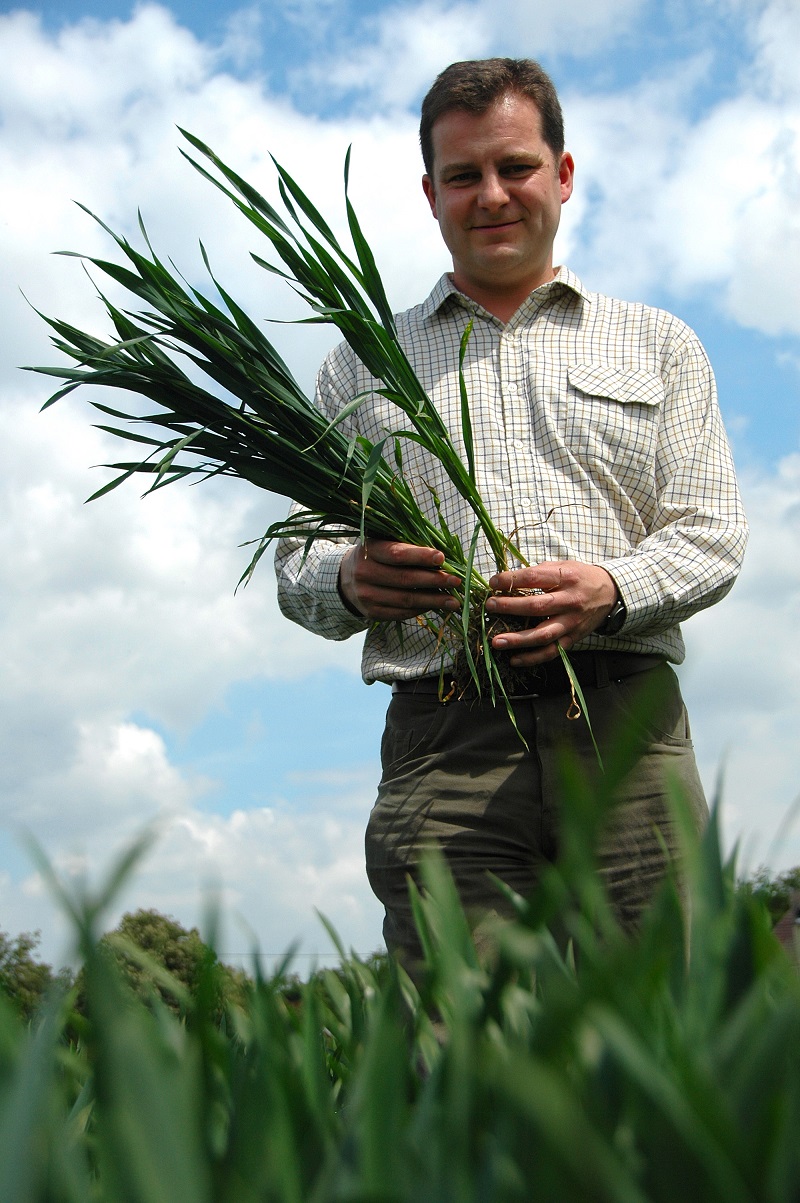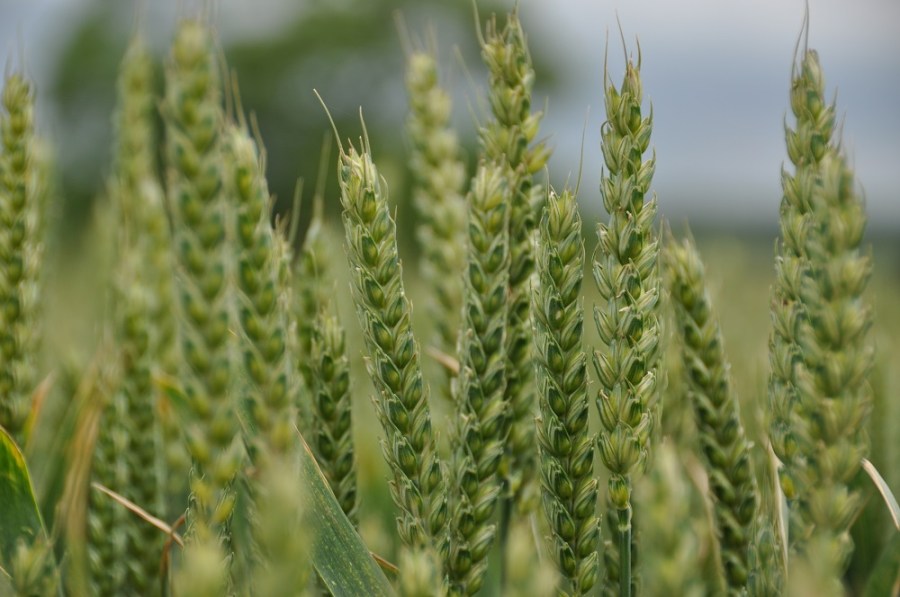KWS Jackal, the highest yielding of the soft Group 4 wheats, is still finding its feet in the market, so where does it fit in the field? CPM reports.
If there’s a grower who’s made a bit of a premium on older soft Group 4s, this seems an obvious change to make.
By Melanie Jenkins
The soft Group 4 category is the second largest of the wheat groups on the AHDB Recommended List, so growers have a number of options when it comes to selection. New on the RL, KWS Jackal now leads that line-up – not only that but it looks favourable on yield against many of the hard Group 4s.
This yield will interest people, says John Miles at KWS. “Another key thing is that it’s a useful tool for farmers who are trying to get a lot done quickly with its extended drilling window.”
KWS Jackal is a cross of Santiago and KWS W177, says Mark Dodds at KWS. “The idea of the cross was to increase yield, improve on the septoria score and specific weight of Santiago. With KWS Jackal we’ve done all of that.”
With its Santiago parentage, one would hope to produce consistency across regions and across farms, says John. “Santiago got better with age – something farmers know well – and it does what it’s meant to do, with consistency in all places it’s planted. Farmers are looking to see this level of consistency across the farm, across rotations, regions and years, and trials with KWS Jackal suggest it does this too.”

A soft Group 4 wheat, KWS Jackal yields particularly well in the North.
The variety looks fairly exciting from a yield point of view, says Chris Piggott at Frontier Agriculture. “If people are growing feed wheats already, then getting a similar yield with a soft variety is appealing. We’ve seen a number of popular Group 4s that have been lacking in agronomic areas, so seeing a variety with better yield and agronomics is encouraging.
“Our decisions on whether to recommend a variety are consistency based, as well as how much yield is made up from fungicide input or if there are any major weaknesses,” he adds. “It’s more important to make sure that there’s no obvious downside and no obvious area to pick out as being weak.”
Andrew Cooper at Walnes Seeds selected KWS Jackal as it’ll play an important role in the firm’s East of England activity. “With a good yield and strong disease, it exhibits well rounded characteristics,” he says.
For Simon Minns at James Mortimer, it’s KWS Jackal’s combination of yield and sowing date versatility that really stands out. “The yield is very good and as a Santiago cross it’s no surprise that the variety is high yielding. There’s also a choice to drill early or later, and as it’s relatively slow developing, it’s safe to drill from mid Sept.”
John concurs that KWS Jackal has the flexibility to be drilled as and when farmers need it. “It’s a positive of KWS Jackal’s that it matters less when you drill it – it’ll still be good and that’s key. There are several fast-developing varieties on the RL for drilling at the back end of Oct but those who want to drill early have found there to be a dwindling list of varieties available – those that are still on the list are getting a bit long in the tooth.”
KWS Jackal is a unique package with its early drilling behaviour, says John. “Trials show its growth habit to be well suited to the North. This is handy as the season closes early. This gives KWS Jackal a useful regional advantage because the northern performance is incredibly good.”
The variety works as a first or as a second wheat – which furthers its appeal – and has performed well on all soil types, says Simon.
This consistent yield across rotational positions is a true bonus, adds Andrew. “It should suit any number of growers rotationally or with varying soil types, from light to heavy. Do just watch the straw on more fertile soils but it’s not much of a worry.”
KWS Jackal also has a good overall disease package, notes Simon. “The fact that it has orange wheat blossom midge (OWBM) resistance is a real stand out feature.”
With the loss of chlorpyrifos, OWBM resistance is an important characteristic to have and keep in the rotation, explains John. In recent years there’s also been a drive from breeders to bring in better septoria resistance, which is key, he adds. “Its septoria score is 5.1, which is respectable, and can be looked after with a sensible spray programme. Growers don’t need to spend the earth on fungicides, it just needs sensible spray timings.”
Mark agrees that the past six years have seen a shift in varieties with improving septoria scores. “All breeders are after this in UK agriculture.”
Its septoria score is satisfactory to Andrew, who has found the susceptibility in other varieties to be a real Achilles heel. “And the yellow rust score is high, so that’s very good.”

Mark Dodds was aiming to increase yield, improve on the septoria score and specific weight of Santiago.
However, the yellow and brown rust pressures change and keep changing and therefore affect the ratings, says John. “These are still relatively easy to control with fungicides though.”
Chris points out that some might worry about KWS Jackal’s eyespot score. “Though it’s a 4, this is closer to the average across the RL and in a second wheat position we’re not necessarily seeing it affected by this score. It’s still suited to grow as a second wheat despite this.”
When it comes to deciding if it’ll work on farm, a Group 4 variety is often viewed much like a Group 2 in that it’ll work for some growers, but not for others, says John. “It’s about marketing options: Some soft 4s go into a range of end-user products depending on the characteristics of the flour, which expands their appeal. These types might have a speciality or local market with a contract that’ll support its value over typical feed prices.”
In the case of KWS Jackal, its good alcohol extraction means it holds appeal to the biofuel sector, but its low Hagberg means it’s unsuited to most biscuit end markets, adds John. “Although it doesn’t have the uks mark for export, markets further north and into Scotland may be interested in it for its ethanol. Our data indicates that it’s not a sprouting risk, it just has a lower Hagberg so is well suited to markets without this requirement.”
However, as a feed wheat its appeal will be nationwide. “Haulage costs are playing an increasingly significant part in a variety’s market appeal, but with feed mills across the country there’s likely to be as much demand for it in East Anglia as in the north of England,” he adds.
Though it has a slightly lower Hagberg than some, there are still one or two niche markets for this type of soft wheat, explains Simon. “It has a good bushel weight and there are local opportunities for a premium on Group 4 soft wheats. This is borne out of the fact that Viscount is still grown locally as a consistent soft wheat with added value. However, there are quite a few soft wheats on the market.”
As a confirmed distilling variety, KWS Jackal could be the new variety growers have been looking for, says Mark. “There are one or two aging varieties within the distilling market, so KWS Jackal could be the successor variety. It combines the two factors needed to succeed in this market sector: high yield and grain suitable for distilling. Having distilling is a good reason for growers and the market to take an interest in it.”
KWS Jackal fits especially well in the northern distilling market due to its high yields in that region, adds Mark. “And as the highest yielding soft Group 4 variety in the East, those with bioethanol plants ought to be looking at is as well.”
Andrew expects KWS Jackal to take market share from varieties like Leeds and LG Sundance. “Though there’s a different market outlet for some of these, there’s an encouraging trend away from just hard wheats, especially for good grain characteristics.”
Simon is expecting a small release of seeds initially but because of the bad weather in the first few months of 2018, farmer interest in autumn cropping options has been limited so far. “With their spring seeds so late in the shed, they haven’t thought much beyond spring drilling but we’ll be promoting the variety and will be taking farmers to the KWS trial ground at East Heslerton, N Yorks, in July.”
Seed supply is relatively limited at the moment, but going forward there’s potential for it to take 5% to 6% of the market share, says Andrew. “It could take up to 10% of what we’re doing. With interest in Groups 2 and 3 growing again, Group 4s have to be on top, which KWS Jackal is. As the highest yielding soft variety available to us, it’ll be the first thing people look at.”
It has been an odd year with regards to varieties, says Chris. “Feed varieties especially, as there are a number of them with significant market share that are getting older. I think there’ll likely be a decline in the market share of these varieties. Newer varieties, such as KWS Jackal, could be a good option for growers looking for replacements.”
He adds: “If there’s a grower who’s made a bit of a premium on older soft Group 4s, this seems an obvious change to make. Also, for those who’ve dabbled with milling but haven’t seen the premiums to make them worthwhile.”
Simon agrees that there’s a real opportunity for a solid soft wheat variety. “With its yields comparable to many of the mainstream hard wheats and as it has a bit of a niche market at the end of it, I think it’ll fit in well.”
Before KWS Jackal, all soft Group 4 seemed to have an Achilles heel, whether agronomically or with bushel weights, says Chris. “But KWS Jackal seems to have more consistency, offering a good overall package.”
KWS Jackal at a glance





